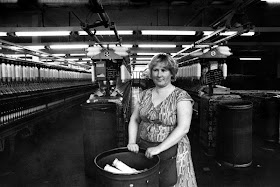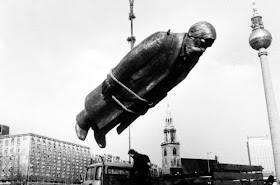In what was formerly East Germany, the visual arts had a key function in enhancing the image of socialist society. Socialist Realism as decreed by the powers-that-were propagated a reality that hinged on the myth of the worker. Art was to be easy to understand and something that could be instrumentalized for didactic purposes. Could artists really be artists in such conditions?
Sibylle Bergemann certainly managed it – within the given restrictions. Her photographs focus on quiet, atmospheric moments, not on strong symbols or grand gestures – in the GDR, which is where she grew up and worked for many years, that was by no means common. The state, she says looking back, hardly influenced her work: “I always worked without paying attention to state restraints and did not care about the censors at all.” Sibylle Bergemann photographed for magazines and newspapers with a cultural thrust that deliberately did not wish to conform to the dominant ideology, and she was thus able to break with the customary visual idiom and its mandatory optimism. She sidestepped the prohibited ideas by opting for fashion photography and everyday shots of her immediate surroundings. In a conditioned world, Sibylle Bergemann tracked down motifs that were individual, bizarre and at times crazy; her images uncover the special side to everyday life, but never completely expose it.
For 28 years, Sibylle Bergemann lived with her mentor and companion Arno Fischer in East Berlin, in an apartment on Schiffbauerdamm, on the banks of the river Spree. She looked out over the border guards, saw the attempts to flee the GDR and the arrests, was witness to a craving for freedom and the harsh hand of the state. Her apartment was visited by photographers from all over the world, but only she was not allowed to leave it. “I wanted to travel. That was a problem.” Her membership in the Visual Artists League enabled her to apply for a study trip every two years “to non-socialist countries”. Thus it was that Sibylle Bergemann repeatedly left her home country, for example in 1980, when she was allowed to travel to Paris for the second time. On the way back, the train stopped in West Berlin, but Sibylle Bergemann did not alight there: “I was held in check by the responsibility toward my husband, my daughter, and our friends.” Yearning and melancholy are not explicit themes in her work, but both are present in Sibylle Bergemann’s images: “I was always yearning to travel.”
Sibylle Bergemann’s photographs are neither propaganda nor do they criticize a particular regime. “I took critical photos too – but that was not my main thing. I was not a resistance fighter. I devoted myself to marginal issues.” Her photographs thus present cropped sections of everyday life in East Germany – and in passing tell stories full of hope and shattered dreams.
& Relics of the Cold War Martin Roemers Photography ...
& Between German Gemütlichkeit and the constant threat of the Cold War Photography ...














Geen opmerkingen:
Een reactie posten